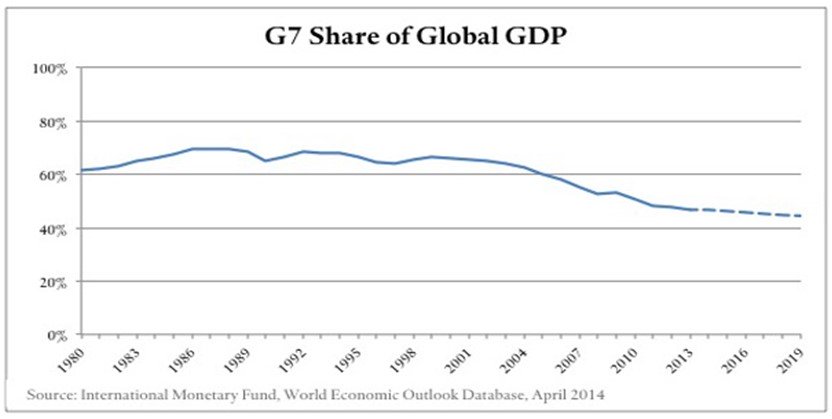France, Italy, Japan, the United Kingdom, the United States, and West Germany formed the Group of Six in 1975 (Canada joined the following year) to provide a venue for the non-Communist powers to address pressing economic concerns, which included inflation and a recession sparked by the OPEC oil embargo. Cold War politics invariably entered the group’s agenda.
The European Union (EU) has participated fully in the G7 since 1981 as a “nonenumerated” member. It is represented by the presidents of the European Council, which comprises the EU member states’ leaders, and the European Commission, the EU’s executive body. There is no formal criteria for membership, but participants are all developed democracies. The aggregate GDP of G7 member states makes up nearly 50 percent of the global economy, down from nearly 70 percent three decades ago.

Unlike the United Nations or the NATO, the G7 is not a formal institution with a charter and a secretariat. Instead, the presidency, which rotates annually among member states, is responsible for setting the agenda and arranging logistics. Ministers and envoys, known as sherpas, hammer out policy initiatives at meetings that precede the annual summit of national leaders.


Add new comment